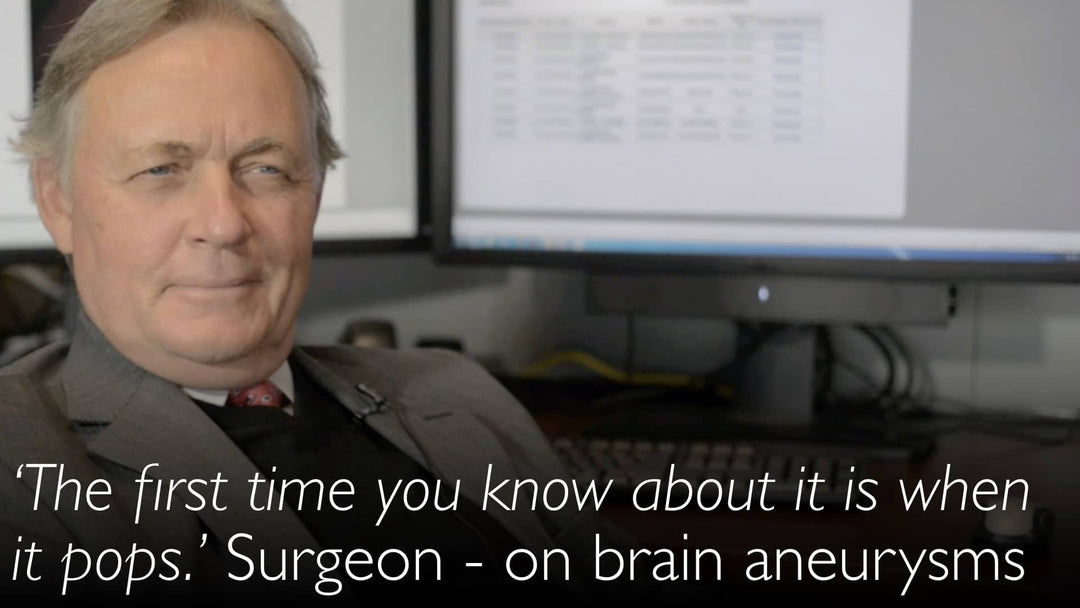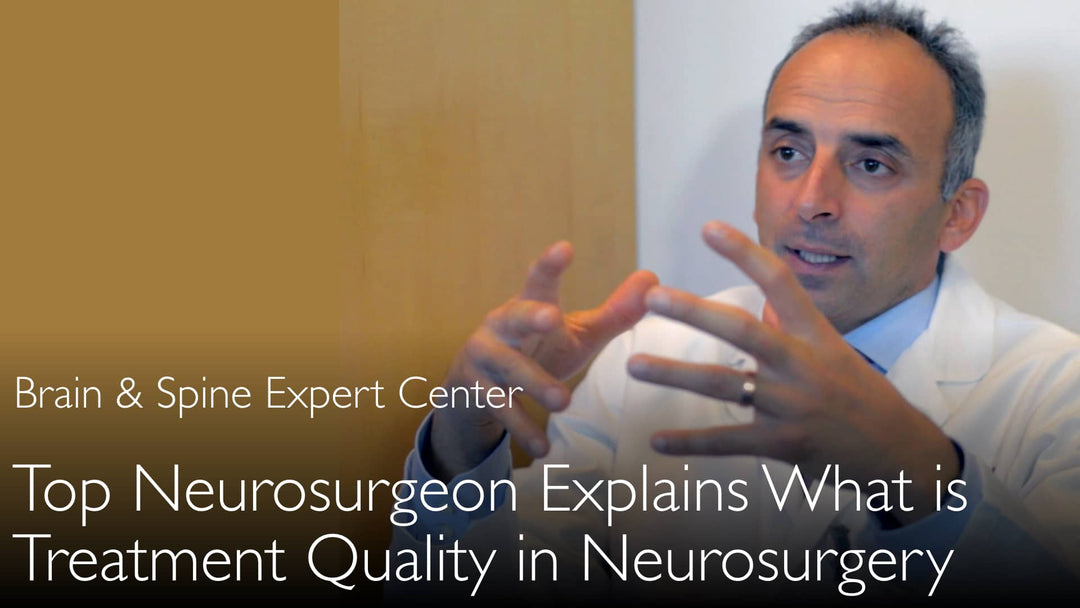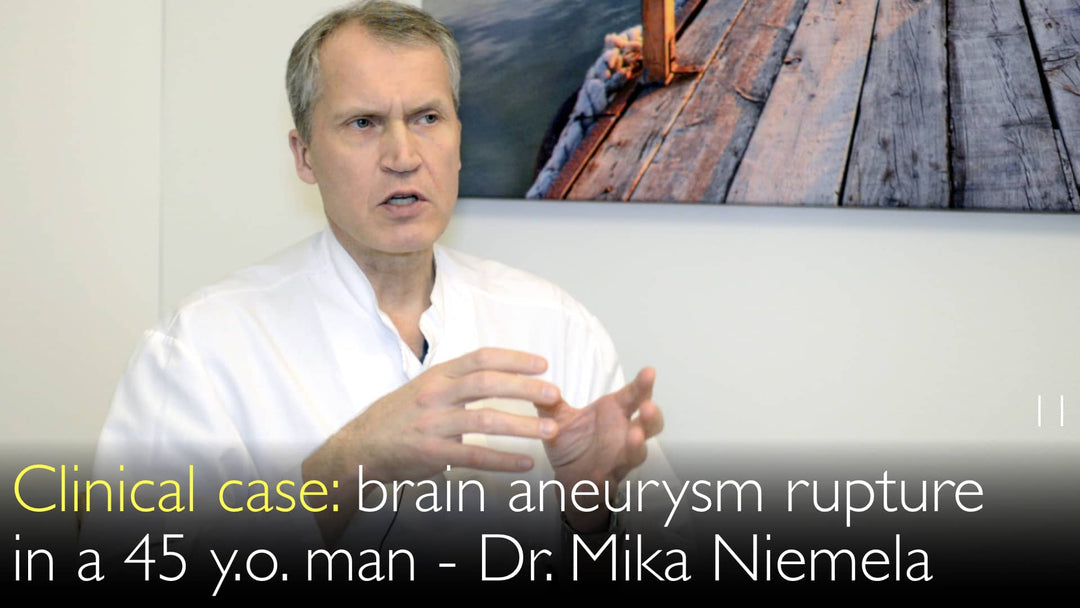뇌혈관 신경외과 분야의 선도적 전문가인 Peng Roc Chen 박사(MD)는 뇌출혈 및 뇌졸중 예방에 있어 상세한 가족력 파악의 중요성을 강조합니다. 그는 뇌동맥류 파열이나 동정맥 기형과 같은 뇌혈관 질환을 여러 가족 구성원이 겪은 경우, 젊은 친척들의 발병 위험이 현저히 높아진다고 설명합니다. Chen 박사는 강력한 가족력이 있을 경우 21세 경 첫 뇌 MRI 검사를 포함한 적극적인 접근법을 권장하며, 이를 통해 치명적인 출혈이 발생하기 전에 취약한 혈관 이상을 조기에 발견하고 치료할 수 있어야 한다고 조언합니다.
뇌출혈 예방: 가족 위험 요인과 뇌졸중 원인 이해
목차 바로가기
가족력과 뇌졸중 위험
뇌출혈 예방은 가족의 의료 기록을 이해하는 데서 시작됩니다. 최고의 뇌혈관 신경외과 전문의인 Peng Roc Chen 박사는 같은 가족 구성원들이 출혈성 뇌졸중에 취약할 수 있다고 강조합니다. 이 위험성이 여러 세대에 걸쳐 나타날 수 있으므로, 가족력에 대한 정확한 이해는 뇌졸중 예방의 중요한 열쇠가 됩니다.
뇌졸중 정확한 원인 파악
단순히 친척이 “뇌졸중”을 앓았다는 사실만으로는 부족하며, 구체적인 원인을 파악하는 것이 중요합니다. Peng Roc Chen 박사의 설명에 따르면, 뇌졸중은 뇌동맥류 파열, 동정맥 기형(arteriovenous malformation, AVM), 또는 허혈성 사건 등 다양한 원인으로 발생할 수 있습니다. 혈관 동맥벽의 약화는 가족 내에서 유전될 수 있는 뇌출혈의 주요 위험 요소입니다.
Peng Chen 박사는 과거에는 MRI와 같은 진단 도구가 없어 사망한 친척의 뇌혈관 사고 원인을 정확히 규명하기 어려웠다고 지적합니다. 이러한 역사적 한계는 생존한 가족 구성원들의 적극적인 선별 검사 필요성을 더욱 부각시킵니다.
가족 내 출혈성 vs. 허혈성 뇌졸중
모든 뇌졸중이 동일하다는 것은 흔한 오해입니다. Peng Roc Chen 박사는 이 두 유형의 중요한 차이를 명확히 합니다. 허혈성 뇌졸중은 막힌 동맥으로 인해 발생하는 반면, 출혈성 뇌졸중은 터진 혈관으로 인한 뇌 내 출혈을 동반합니다.
그는 가족들이 친척의 뇌졸중 원인을 제대로 조사하지 않고 단순히 “뇌졸중”으로만 치부하는 경우가 많지만, 실제 원인이 뇌동맥류 파열과 같은 출혈성 사건이었다면 다른 혈연 가족 구성원들의 혈관 건강에 중요한 시사점을 준다고 설명합니다.
적극적 예방 전략
뇌졸중으로 인한 사망을 줄이는 가장 좋은 방법은 예방입니다. Chen 박사는 뇌혈관 사고 가족력이 있는 사람들에게 적극적인 접근을 권합니다. 즉, 이러한 사건들을 무시하지 말고 자신의 건강을 이해하는 중요한 단서로 삼아야 한다는 것입니다.
그는 여러 가족 구성원이 뇌졸중, 뇌출혈, 또는 동맥류 파열을 경험했다면 이는 중요한 혈관 병력에 해당한다고 말합니다. 이러한 배경은 더 많은 주의와 예방 조치가 필요함을 시사합니다.
의료 제2의견의 중요성
의료 제2의견은 진단과 치료 계획 수립 모두에서 중요한 단계입니다. Peng Roc Chen 박사는 제2의견이 뇌출혈 진단의 정확성과 완결성을 확인해 주고, 뇌졸중 및 뇌출혈에 대한 최적의 치료법을 선택하는 데 도움이 된다고 강조합니다.
이 과정을 통해 허혈성이든 출혈성이든 뇌졸중에 대한 치료 계획이 가장 효과적임을 확신할 수 있습니다.
뇌 MRI 검사 고려 시기
우려되는 가족력이 있는 젊은이들을 위해 Chen 박사는 구체적인 권고를 제시합니다. 그는 21세가 된 후 첫 뇌 MRI 촬영을 고려해 볼 것을 조언합니다.
이러한 선별 검사를 통해 파열되지 않은 뇌동맥류나 AVM과 같은 잠재적 이상을 조기에 발견하면, 치명적인 출혈이 발생하기 전에 미리 대처할 수 있습니다. 이 적극적인 접근은 현대적인 뇌졸중 예방 전략의 핵심입니다.
혈관 병력의 위험 신호
뇌졸중 가족력은 건강에 대한 중요한 경고 신호로 여겨야 합니다. Dr. Anton Titov 박사와의 대화에서 Peng Roc Chen 박사는 과거 뇌혈관 사고의 성격을 파악하는 것이 환자本人뿐 아니라 전체 가족을 위해 중요하다고 강조합니다.
친척에게 일어난 일을 이해하는 것은 자신의 위험 수준에 대한 소중한 통찰을 제공하며, 예방과 조기 발견을 통해 뇌혈관 건강을 주도적으로 관리할 수 있게 합니다.
전체 전문
뇌졸중과 뇌출혈 예방은 매우 중요합니다. 특히 가족 위험 요인에 주목해야 합니다. 허혈성 뇌졸중에는 여러 위험 요소가 있지만, 뇌졸중과 뇌출혈의 가족력에 유의하는 것이 핵심입니다. 같은 가족 구성원들은 출혈성 뇌졸중에 높은 위험에 노출될 수 있으며, 이는 여러 세대에 걸쳐 나타날 수 있습니다.
뇌출혈의 원인은 뇌동맥류나 동정맥 기형(arteriovenous malformation, AVM)일 수 있습니다. 의료 제2의견은 뇌출혈 진단이 정확하고 완전한지 확인해 주며, 최적의 치료법 선택을 지원합니다. 허혈성 및 출혈성 뇌졸중 모두에 대해 제2의견을 구함으로써 치료가 최선인지 확인하세요.
혈관 동맥벽의 약화는 뇌출혈 위험으로 이어질 수 있습니다. 따라서 뇌졸중과 뇌출혈 예방을 위해 가족 위험 요인을 인지하는 것이 중요합니다. 출혈성 뇌졸중 예방은 가족력에 대한 세부적인 이해를 필요로 하며, 뇌출혈은 혈연 관계를 통해 여러 세대에 걸쳐 발생할 수 있습니다.
Dr. Peng Chen, MD: 뇌졸중 예방은 뇌졸중 사망을 줄이는 가장 효과적인 방법입니다. 어떤 사람들은 뇌동맥류 파열 가족력을 가지고 있지만, 친척의 사건을 반드시 뇌동맥류 파열로 확인하지는 않을 수 있습니다. 그들은 “내 친척 중 한 명이 뇌졸중을 앓았어요.”라고 말하지만, 실제로는 출혈성 뇌졸중일 수 있습니다.
사람들은 그 뇌졸중의 원인을 제대로 조사하지 않은 경우가 많습니다. 반드시 허혈성 뇌졸중이 아닐 수 있고, 뇌동맥류 때문에 발생했을 수도 있습니다. 정확히 무엇이 뇌졸중을 일으켰는지 이해하는 것이 매우 중요합니다.
Dr. Anton Titov, MD: 제 생각에는 박사님의 말씀이 매우 의미 있습니다. 우리는 가족 구성원, 특히 부모나 조부모, 형제자매에게서 이전 뇌졸중 및 뇌동맥류 파열 사건의 실제 원인을 찾아볼 필요가 있습니다.
Dr. Peng Chen, MD: 하지만 안타깝게도, 오래전에 사망한 경우 당시에는 MRI가 없었고, 고급 의료 서비스에의 접근성도 제한적이어서 뇌혈관 문제의 정확한 원인을 알기 어려웠습니다. 그러나 뇌 사건, 뇌혈관 사고, 뇌졸중 또는 뇌 내 출혈과 관련된 여러 가족 구성원이 있는 가족을 본다면,
그것은 뇌졸중, 뇌출혈 또는 유사한 무엇일 수 있습니다. 저는 이런 젊은이들이 가족 내에서 발생한 사건에 주의를 기울일 필요가 있다고 조언합니다. 뇌혈관 사고, 뇌졸중, 출혈, 동맥류 파열을 경험한 구성원이 여러 명确实히 있다면, 최소한 가족 내에 혈관 병력이 있다는 의미입니다.
따라서 조금 더 주의를 기울이세요. 예를 들어 21세가 된 후 첫 뇌 MRI 촬영을 고려해 보는 것도 좋습니다. 적극적인 접근을 취하세요. 뇌졸중 가족력은 분명히 위험 신호입니다. 따라서 뇌혈관 사고의 성격을 조사하는 것도 중요합니다.
뇌졸중의 원인을 찾는 것은 환자本人뿐 아니라 가족 전체를 위한 일입니다. 그것이 가족의 다른 구성원들에게 어떤 의미인지 이해해야 합니다.
Dr. Anton Titov, MD: 물론입니다. 절대적으로 옳은 말씀입니다.
뇌졸중과 뇌출혈 예방, 가족 위험 요인. 뇌졸중의 정확한 원인을 아는 것이 왜 중요한가? 뇌동맥류 파열은 여러 세대에 걸쳐 발생할 수 있습니다.








